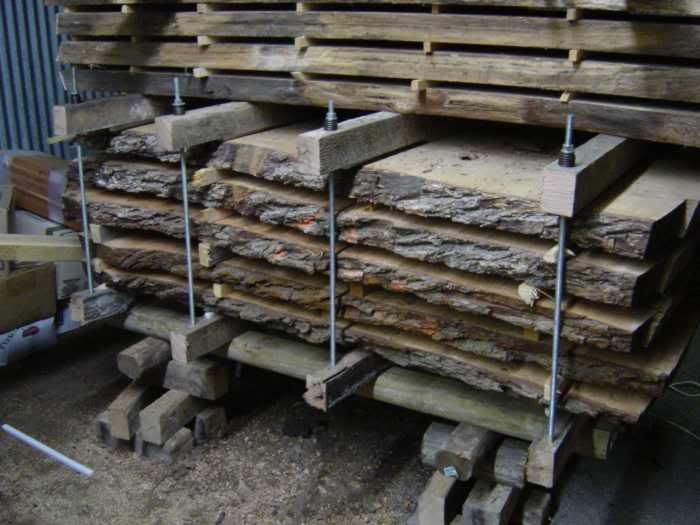t_andersen
ArboristSite Operative
Guys,
I am milling wood for my small woodshop. I attach a photo of some oak that I milled last winter. I consistently have a problem and most of my neighbors also have it. Because of too little weight on the top of the pile, the upper third of the wood tends to warp during the summer to the extent that it makes the wood unusable. I realize that putting weights on top of the pile is one solution but it's a lot of work and not always easy to find suitable weights. Further, with all the weights, it's difficult to attach a roof on top of the pile.
I wonder whether one can invent a system that clamps the top and bottom together (maybe as shown in Adrpk's photos in another thread), possibly using a steel wire that can be tightened? The roof should somehow be integrated into the design. In addition, it should be cheap and easy to remove for access to the pile.
Do you guys have good solutions and would you be willing to share some photos? It seems a pity to loose so much good wood due to warping.
I am milling wood for my small woodshop. I attach a photo of some oak that I milled last winter. I consistently have a problem and most of my neighbors also have it. Because of too little weight on the top of the pile, the upper third of the wood tends to warp during the summer to the extent that it makes the wood unusable. I realize that putting weights on top of the pile is one solution but it's a lot of work and not always easy to find suitable weights. Further, with all the weights, it's difficult to attach a roof on top of the pile.
I wonder whether one can invent a system that clamps the top and bottom together (maybe as shown in Adrpk's photos in another thread), possibly using a steel wire that can be tightened? The roof should somehow be integrated into the design. In addition, it should be cheap and easy to remove for access to the pile.
Do you guys have good solutions and would you be willing to share some photos? It seems a pity to loose so much good wood due to warping.





